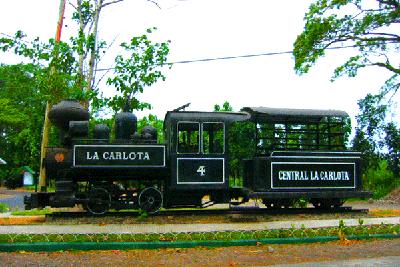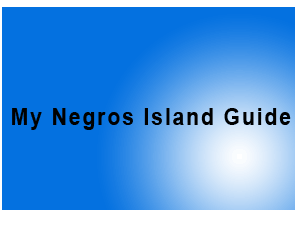- GENERAL INFORMATION
- General Info
- Money
- CITIES/TOWN
- Bacolod City
- Bago City
- Cadiz City
- Escalante City
- Himamaylan City
- Kabankalan City
- La Carlota City
- Sagay City
- San Carlos City
- Silay City
- Sipalay City
- Talisay City
- Victorias City
- Binalbagan
- Calatrava
- Candoni
- Cauayan
- EB Magalona
- Hinigaran
- Hinoba-an
- Ilog
- Isabela
- La Castellana
- Manapla
- Moises Padilla
- Murcia
- Pontevedra
- Pulupandan
- Salvador Benedicto
- San Enrique
- Toboso
- Valladolid

The Ruins
Like a lady wooed by her man, the Ruins play with your emotions especially at sunset with its orange pinks and purples hues. He charms, tickles and romances you. But at sundown, the Ruins take a different persona. With blue and golden sights emanating from nooks and crannies, it is now a lady, teasing, flirting, a temptress confident of her beauty as well as her majesty.

Bacolod …. Fun in the Mountain
Motor to the Hawaiian Philippines Company for some orientation on how the famous muscovado sugar is made. Here, you will have a good understanding of the island’s sugar industry and how it is able to sweeten your day.
La Carlota City

Welcome to La Carlota City - the drum beating city of beauty and dance, home
of the oldest and most notable sugar mills in the Negros Island province, a
dream for nature lovers. La Carlota will thrill foreign and local tourists
through the celebration of the Pasalamat Festival, which falls every last week
of April nearest to Labor Day.
La Carlota City is geographically situated at the Southwestern portion of Negros
Occidental. The town of La Castellana in the Southeast of La Carlota, the town
of Pontevedra in the South and the town of San Enrique in the East. La Carlota
City is bounded in the North of Bago City, the mountain ranges of Kanlaon
Volcano in the East. The city of La Carlota has a total land area of 13, 729
hectares where the big portion of this land was covered by agricultural area.
The city was very accessible because of its concrete road that helps the economy
of the city especially on the business sector.
The city is also experiencing same weather condition just other neighboring city
in the region. The dry season that starts from the month of January until May,
and the wet season that starts from the month of May to the first week of
January.The First recorded population was 3,097 in 1903. The 1995 National
Statistics Office survey has recorded a population of 56,414. The 1997
Population was 57,982 and in the year 2002, the population peaked at 62,094. By
then the Population Density was 4.5 person/hectare. Of the 14 Barangays,
Barangay II has the biggest population at 9,221 and Barangay Yubo had the
smallest with 1,962.
Festivals
Pasalamat Festival is a thanksgiving celebration held on Sunday nearest to
the month of May. Pasalamat brings together the La Carloteños in unity and
thanksgiving to God Almighty for providing the people with gift of life and
perseverance despite life’s difficulties.
The festival attracts local and international tourists as merrymakers don
colorful costumes fashioned out of indigenous materials dancing to the unique
and original “Pasalamat Samba Beat” played by local drumbeaters using percussion
instrument.
The Christmas Festival of Lights and Music features lighted trees in the park,
private and public buildings around the city. The city’s festival of lights and
music is considered as the biggest in the province.
It also showcases various churches and local choir group in the nightly
Christmas Cantata at the park from December 15-January 1.

